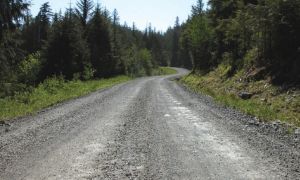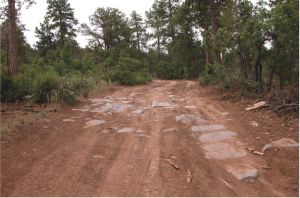Dmcrandall (talk | contribs) (→Special_roads/Main: Updated Dirt Roads and Pvt Roads) |
(RR update and simplification, Trails update, and minor edits) |
||
| Line 3: | Line 3: | ||
=== Railroads === | === Railroads === | ||
Railroads/light rail are mapped according to [[Road_types/USA#Railroad|special guidelines]] in the USA. As of 2016-06-28, '''Railroad segments should not be named''' except for special, approved cases. No such cases are currently approved in Utah. | |||
=== Walking Trails === | === Walking Trails === | ||
'''Do not map hiking or biking paths/trails'''. It is common for newer editors to see "missing" paths/trails on the map, and see a readily available Walking Trail segment type to choose from, but mapping trails is an error. The Walking Trail type is [[Road_types/USA#Walking_Trails|routable by Waze and will cause unintended results]] for nearby destinations. There are rare cases where a Walking Trail segment can be added to the map to improve routing, but all uses must be approved by a Walking Trail expert. | |||
The | |||
===Dirt Roads 4x4=== | ===Dirt Roads 4x4=== | ||
{{Collapsible section top}} | {{Collapsible section top}} | ||
Utah follows the following functional classification for Gravel and Dirt Road /4x4 trails. | Utah follows the following functional classification for Gravel and Dirt Road /4x4 trails. (expandable section) | ||
{{Collapsible section content}} | {{Collapsible section content}} | ||
| Line 74: | Line 47: | ||
{{Collapsible section bottom}} | {{Collapsible section bottom}} | ||
Images demonstrated above | Images demonstrated above cannot cover all scenarios for mapping ''maintenance level'' to Waze ''road type''. These roads may undergo variation in quality over seasons depending on the climate (rain/snow). Particularly, some gravel roads may have qualities that are closer to Dirt Road / 4x4 Trail than Street. Editors with local experience and Street View images may help in this determination. | ||
| Line 87: | Line 60: | ||
'''Mapping rural diveways''' | '''Mapping rural diveways''' | ||
* If an address/location cannot be reasonably guided to without a private drive, it can be added. | * If an address/location cannot be reasonably guided to without a private drive, it can be added. | ||
* | * A single house at the end of a 1 mile (1609m) long private drive = it probably isn't needed. | ||
* If it's 5 houses at the end of a single shared 1/ | * If it's 5 houses at the end of a single shared 1/4 mile (402m) long private drive, it probably is needed. | ||
* If it's a house at the end of a 500m (1640 ft) long private drive which is right up against another street from which you cannot access the address (stop point will be on the segment closest), then a private drive is probably needed. | * If it's a house at the end of a 500m (1640 ft) long private drive, which is right up against another street from which you cannot access the address (stop point will be on the segment closest), then a private drive is probably needed. | ||
Revision as of 19:53, 28 June 2016
Railroads
Railroads/light rail are mapped according to special guidelines in the USA. As of 2016-06-28, Railroad segments should not be named except for special, approved cases. No such cases are currently approved in Utah.
Walking Trails
Do not map hiking or biking paths/trails. It is common for newer editors to see "missing" paths/trails on the map, and see a readily available Walking Trail segment type to choose from, but mapping trails is an error. The Walking Trail type is routable by Waze and will cause unintended results for nearby destinations. There are rare cases where a Walking Trail segment can be added to the map to improve routing, but all uses must be approved by a Walking Trail expert.
Dirt Roads 4x4
Images demonstrated above cannot cover all scenarios for mapping maintenance level to Waze road type. These roads may undergo variation in quality over seasons depending on the climate (rain/snow). Particularly, some gravel roads may have qualities that are closer to Dirt Road / 4x4 Trail than Street. Editors with local experience and Street View images may help in this determination.
Driveways / Private Roads
| Please follow the following guidelines for Private Driveways. Wiki standard can be found here. Driveways |
Mapping rural diveways
- If an address/location cannot be reasonably guided to without a private drive, it can be added.
- A single house at the end of a 1 mile (1609m) long private drive = it probably isn't needed.
- If it's 5 houses at the end of a single shared 1/4 mile (402m) long private drive, it probably is needed.
- If it's a house at the end of a 500m (1640 ft) long private drive, which is right up against another street from which you cannot access the address (stop point will be on the segment closest), then a private drive is probably needed.

